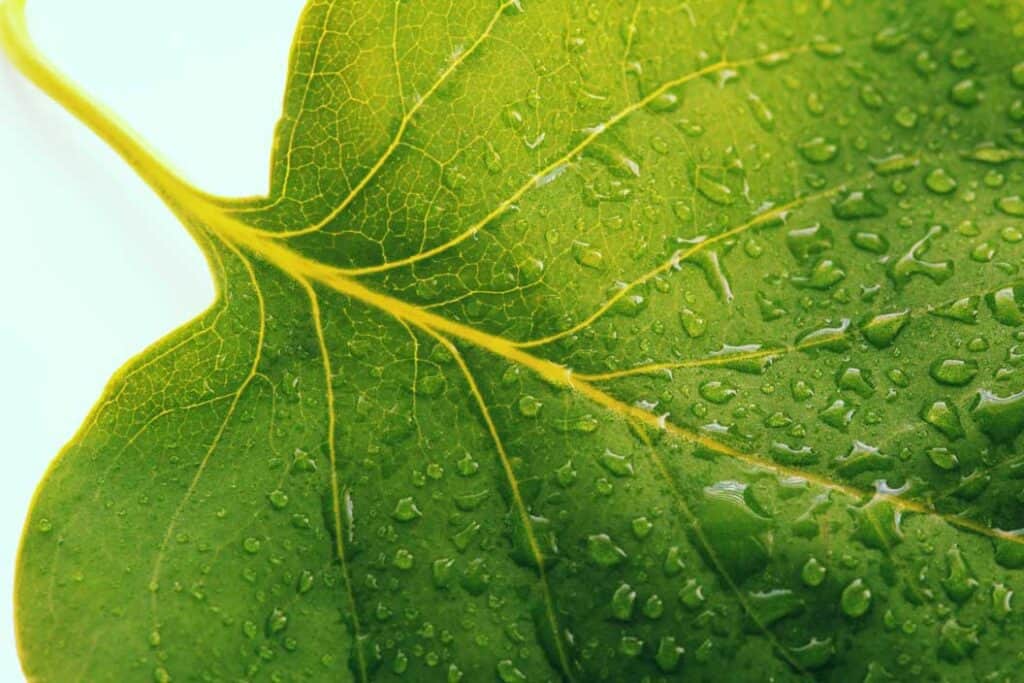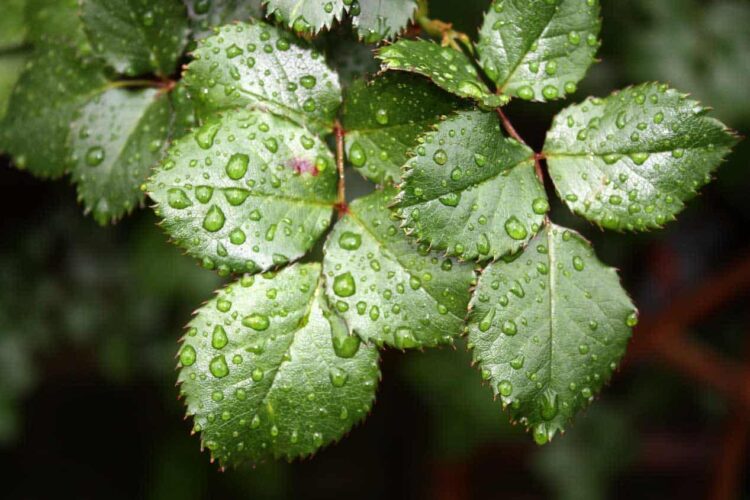Table of Contents
So many guides talk about what stick insects eat, but little time is dedicated to what stick insects drink.
Stick insects need water to survive. And the vast majority obtain this water from the leaves they eat; with a few exceptions.
They just get it in different ways. The more knowledge you have about this subject, the better you’ll understand stick insect care.
So let’s take a look at how you can make sure that stick insects get the water they need.
For more advice and information on keeping and looking after stick insects, check out my ebook on Amazon click here
(opens in a new tab).

Stick Insects Require Water to Survive
Do stick insects need water? Yes, they do, but it is not easy to tell if a stick insect is dehydrated, hungry, or in some other form of distress.
If you understand how stick insects get the water that they need and why they need it, you will be able to ensure that your stick insects have the hydration they need to flourish.
Other than survival, stick insects also need water to help them when it comes to moulting. If they cannot moult correctly because of hard skin, they can be left deformed, or even. In a worse-case scenario, dead. This is why it is so important that you mist your stick insect enclosure regularly.
But just how do stick insects get the water they require?
The Water is in the Leaves
Most guides emphasise the importance of providing your stick insects with fresh leaves . Stick insects will not eat anything but fresh leaves, even if they happen to be starving.
. Stick insects will not eat anything but fresh leaves, even if they happen to be starving.
Leaves are not just necessary for food though; they are crucial for hydration. Fresh leaves still have little beads of water inside the little veins, which is how the majority of stick insects drink .
.
Partially rotten leaves have no nutritional value, nor can they provide any hydration. This is why your stick insects may appear such fussy eaters.
When you pick leaves to feed your stick insects, you need to ensure that they are kept fresh. The moment you pick those leaves they start to dry out and lose their nutritional value.
So let us take a look at how you can keep leaves fresh for your pets.

Keeping Your Leaves Fresh
Leaves start losing their water content the moment you pluck them from the main plant. You will notice that this process happens faster when placing the leaves in an exotic stick insect enclosure because the light bulbs and heat mats within are cause faster evaporation.
Therefore, you should support the leaves by submersing the stems in water. This is important even before you actually serve them to your pets.
It acts like life support and keeps the leaves fresh for the longest possible time. The leaf will continue to suck up water in this way.
To help your leaves last longer, you should mist the enclosure at least once per day.
Not only will misting raise the humidity levels, which is vital for keeping the right conditions for many exotic stick insect species, but the water droplets will remain in the leaves for longer via osmosis.
The droplets on the leaves can also act as an extra drink for your sticks.
And stick insects that live in high temperature environments need all the water they can get.
Beware of the Danger of Water Vessels
Now that you know you need to submerse the stems, you need to know about the dangers of vases and other water containers. Stick insects are not good swimmers, but older stick bugs do have the strength to get themselves out if they happen to fall in.
Stick insect nymphs, on the other hand, can drown in a matter of seconds. They are too small to survive and do not have the strength to extract themselves. You need to take precautions if you have any nymphs as part of your colony.
in a matter of seconds. They are too small to survive and do not have the strength to extract themselves. You need to take precautions if you have any nymphs as part of your colony.
Use a mosquito net to cover the receptacle. Place the net over the top of your vase or container. These nets are excellent for this purpose as nymphs cannot fall through the tiny holes, but the stems can be pushed through the holes into the water below.
Are there Other Ways for Stick Insects to Drink?
Most stick insects hydrate via the leaves, but some will drink directly from a water vessel.
The Haaniella species is a common example of a stick insect that drinks from standing water. If you own a species like this, you will need to offer them a low bowl that has been regularly topped up with fresh water.
Some novice stick insect owners worry about their pets drowning as they immerse their entire head into the water when drinking – for quite some time.
Stick insects do not breathe from their mouths. They have specialised spiracles on the abdomen and thorax that they breathe through, as well as to take in water.
This is another reason many guides recommend you do not attempt to pick up a stick insect by its thorax; it can cause a lot of damage.
So don’t worry; your pet hasn’t drowned if its head is submerged.
Is there Anything to Know About Preparing Water for Stick Insects?
Stick insects do not need any special care if they take their water from leaves. But those species that drink from bowls do need some extra attention paid to them.
Water from the tap may not always be suitable. It depends on where you live as countries all over the world have different water treatment methods in force.
For example, some countries add lots of chlorine to the water system. Others treat it heavily with fluorine, especially in the US, and these substances are not suitable for stick insects.
So while humans can drink treated water, for stick insects it could be the last drink they ever take.
We recommend harvesting rainwater instead. Leave a bucket or a bowl out in the open and allow it to fill. This may be dirty for humans, but stick insects have few problems with it.
You can also mimic the same effect in your home with tap water by letting it stand for a few days before serving. But with heavily treated water even this strategy should be avoided.
Last Word – How to Keep Your Pet Watered
Stick insects will get enough sustenance from leaves. Make sure you do your research to ensure that your stick insect isn’t one of the species that prefers to drink water directly. Not many novices consider that this could be the case.
Make sure you collect rainwater and have a handy supply in reserve for the summer months. Avoid any water that may have been laced with additives. Stick insects are sensitive to these substances.


